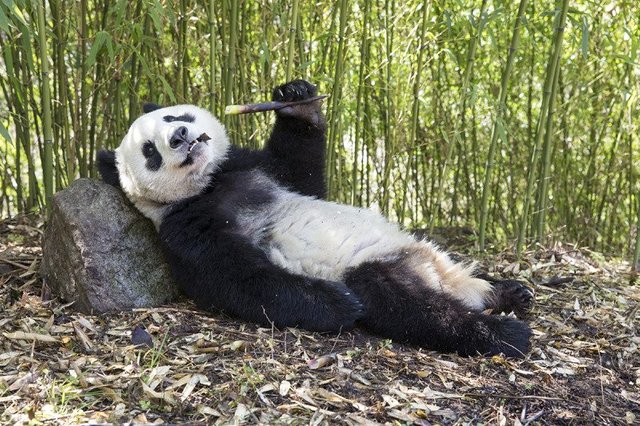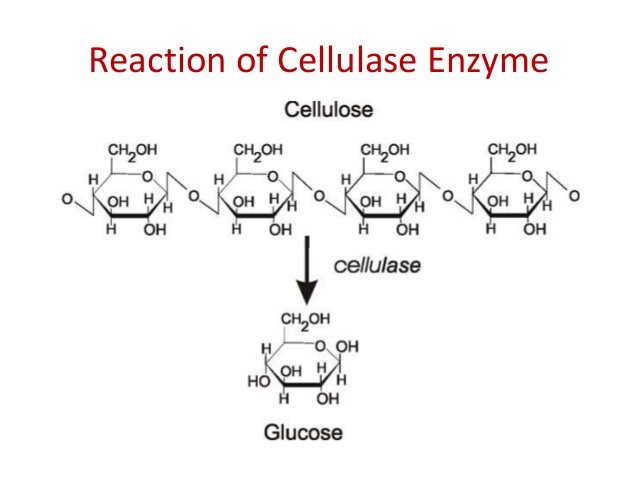BioCuriosity 03 [EN] – Vegetarian carnivores, studying the case of the Giant Panda
(original french version here)
In this third edition, we will discuss how the giant panda, or Ailuropoda melanoleuca, adapted and how it was for a long time the biggest cause of incomprehension in the scientific world. Indeed, why and how did an animal who possesses all characteristics of a carnivore came to eat plants?
I don’t know if presenting this Ursidae is really necessary, given that he is the symbol of endangered species and of the WWF. Even though he is not categorized in the “threatened” category anymore but in the “vulnerable” one, thanks to titanic efforts from China, the species still only counts 1864 feral individuals.
There is a lot of things to say about this curious animal: its sixth thumb, its diet, its behavior, its mating rituals or its goofy way to raise his progeny… This would fill numerous pages that I have neither time to write and neither have you time to read in one article, so today we’ll discuss about its diet. If you find this an interesting subject, just let me know if you want more BioCuriosity about it!
So, our cute panda friend has a diet composed of 99% bamboo, which is a curious thing because his digesting system looks a lot like that of a carnivore. To retrieve the nutrients contained in plants necessitates a longer digestion time where the plants stay longer in the intestines than meat. That is the reason why the intestine of a herbivore has a length of about 10 to 22 times the total body length, whereas our little black and white bear friend only has an intestine that is 4 times longer than him.
Let’s look more closely at this digestion. It necessitates the action of an enzyme called “celulase” that breaks the cellulose contained in plants into glucose, a way easier molecule to assimilate for the body.
However, the Beijing Genome Institute of Shenzen that sequenced the animal’s genome revealed a total absence of genes that would allow the production of cellulase in the body. This finding indicates that the cellulase is not created by the panda himself, but rather by a micro-organism living in its digestive tube. It is crucial to note that this symbiotic relationship is vital to most herbivores.
But then, why did this animal put meat aside?
Different studies seem to suggest that this drastic change in diet simply comes from taste preferences, linked to an inactive gene coding the fabrication of certain censorial receptors. This gene is called Tas1r1 and is believed to be partly responsible for the “Unami” (japanese for savory/delicious) of meat. This “taste gene” underwent changes in the order of its basic pairs, creating stop-codons that stop the transcription in a premature way.
Thank you all for reading this little article, I had a hard time summarising it, but I hope you enjoyed it anyways! If some words or physiological processes sound like chinese to you, don't hesitate to ask me and I’ll do my best to explain it.
To know more:
[EN] Article «Dietary shifts affect the gastrointestinal microflora of the giant panda (Ailuropoda melanoleuca)» par C. L. Williams, S. Willard, A. Kouba, D. Sparks, W. Holmes, J. Falcone, C. H. Williams and A. Brown (EN)
http://onlinelibrary.wiley.com/doi/10.1111/j.1439-0396.2012.01299.x/full
[FR] https://www.sciencesetavenir.fr/nature-environnement/pourquoi-le-panda-mange-t-il-du-bambou_6160
[EN] Article « Pseudogenization of the Umami Taste Receptor Gene Tas1r1 in the Giant Panda Coincided with its Dietary Switch to Bamboo » par Huabin Zhao, Jian-Rong Yang, Huailiang Xu, et Jianzhi Zhang (EN)
https://academic.oup.com/mbe/article/27/12/2669/1071261
Photography :
Just chilling, as if… de Suzi Eszterhas
https://www.suzieszterhas.com/index

My blog : https://steemit.com/@siniy
My instagram : https://www.instagram.com/biosiniy/
01 The incestuous story of an Acarien.
02 The story of Elysia, sailing between animal and vegetable.


